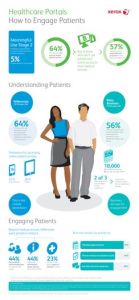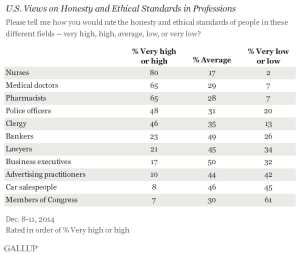 The Field of Dreams works in nostalgic plotlines about baseball, but as I’ve pointed out since the advent of consumer-facing health technologies, there’s no Field of Dreams effect in health care when it comes to consumer health engagement.
The Field of Dreams works in nostalgic plotlines about baseball, but as I’ve pointed out since the advent of consumer-facing health technologies, there’s no Field of Dreams effect in health care when it comes to consumer health engagement.
U.S. health consumers aren’t using the patient portals that health care providers have built as part of their efforts to bolster health engagement via EHRs and health IT, Xerox found in the company’s 5th annual survey on electronic health records.
I spoke with Tamara St. Claire to discuss the implications of the consumer poll, which was conducted among 2,017 U.S. adults in September 2014.
Most consumers are unaware of patient portals because they haven’t been made aware, St. Claire explained. Physicians are simply not talking with patients about the availability of the portals. “A lot of providers may not be using patient portals because they’re not sure the ROI is there,” St. Claire intuits.
Xerox sees this not as much a technology-patient portal issue but as a patient engagement issue. Patients are moving from playing passive to active roles, and so physician-patient engagement (and measurement) should be integrated into health providers’ strategies for achieving the Triple Aim: lowering per capita costs, improving health outcomes, and driving patient satisfaction through more enchanting care experiences.
Encouraging people to engage with their health data, and especially patient portals, isn’t a one-and-done St. Claire advises. Health providers must meet patients via multiple touchpoints around the life cycle of each patient. And it’s important for the health provider to engage in that conversation while the patient is still in the office or exam room, she believes.
The good news is that health care providers can leverage new technologies in that clinical office moment-of-truth – changing workflow patterns to the front of the office via kiosks, tablets, and mobile technologies.
Some of the most intriguing data points in the survey were that:
- Among the 89% of consumers with an ongoing health care provider, only 30% of consumers’ providers talked with them about converting their paper records to electronic format
- Among the 90% of consumers familiar with the conversation of paper records to digital records, 41% believe this would lead to more efficient care, 40% think it’s “necessary,” and 32% of people want their medical records to go digital
- 85% of consumers have concerns about digital medical records, with potential computer hacking being the top concern (for 70% of people) followed by digital records being lost/damaged/corrupted (among 57%), personal information being misused (for 55%), and a power outage preventing clinicians from being able to access the patient’s health information.
On the upside, 57% of consumers say that they’d be more interested and proactive in their own health care if they had online access to their medical records. Across all age groups, the most attractive applications to use on a patient portal would be to schedule appointments, access and review medical records and test results, ask physicians questions, refill meds, and request a referral.
While a majority of consumers across all age groups would prefer to access personal health records on PCs and laptops (78% overall), preferences for mobile access via tablets and smartphones were greater for people under 44 years of age.
 Health Populi’s Hot Points: All consumer retail experiences require multiple touchpoints, channels and communication platforms, based on each individual person’s life-flow and media consumption patterns. Health care is joining other retail formats – travel, banking, shopping – in having to meet the evolution of homo informaticus, the information-seeking and –embracing digital human.
Health Populi’s Hot Points: All consumer retail experiences require multiple touchpoints, channels and communication platforms, based on each individual person’s life-flow and media consumption patterns. Health care is joining other retail formats – travel, banking, shopping – in having to meet the evolution of homo informaticus, the information-seeking and –embracing digital human.
In terms of driving traffic to patient portals and the overall health care information embrace, informing people about the existence and benefits of using the portal doesn’t have to be the real-time doctor’s voice, per se – but can be bundled into the clinical experience associated with the physician. The doctor continues to be one of the most trusted touchpoints in health care. That “trust equity” can move from the exam room to the front of the office, where kiosks and mobile tech can engage patients in all sorts of interactions — including but not limited to educating about the existence and benefits of the patient portal and personal health information access.
Trust drives health engagement, and doctors are ranked #2 after nurses and tied with pharmacists in terms of honesty and ethical standards, according to Gallup’s survey released last week.
The Sony hack situation has further shaken U.S. consumers’ perspectives on security of personal information, and several analysts have commented on early impacts for personal health information (PHI). With health consumers largely unaware of patient portals, and concerned about security and confidentiality, health care providers can leverage the Trust Factor along with meeting people where they are in terms of media platforms and channels to promote peoples’ engagement with health information. Building a portal is clearly no guarantee of PHI engagement.




 I am so grateful to Tom Lawry for asking me to pen the foreword for his book, Health Care Nation,
I am so grateful to Tom Lawry for asking me to pen the foreword for his book, Health Care Nation,  Thanks to Feedspot for naming this blog, Health Populi, as a
Thanks to Feedspot for naming this blog, Health Populi, as a